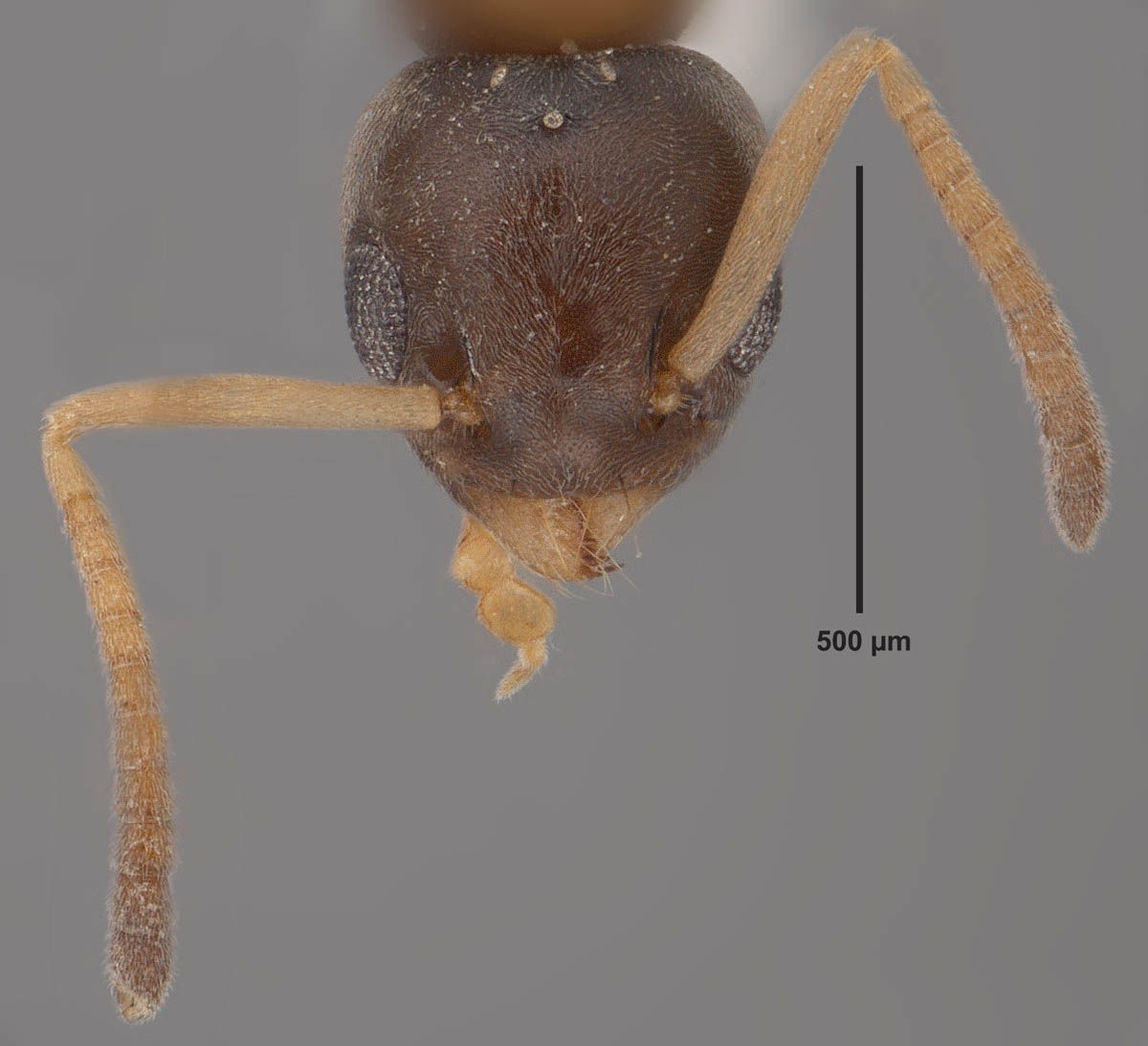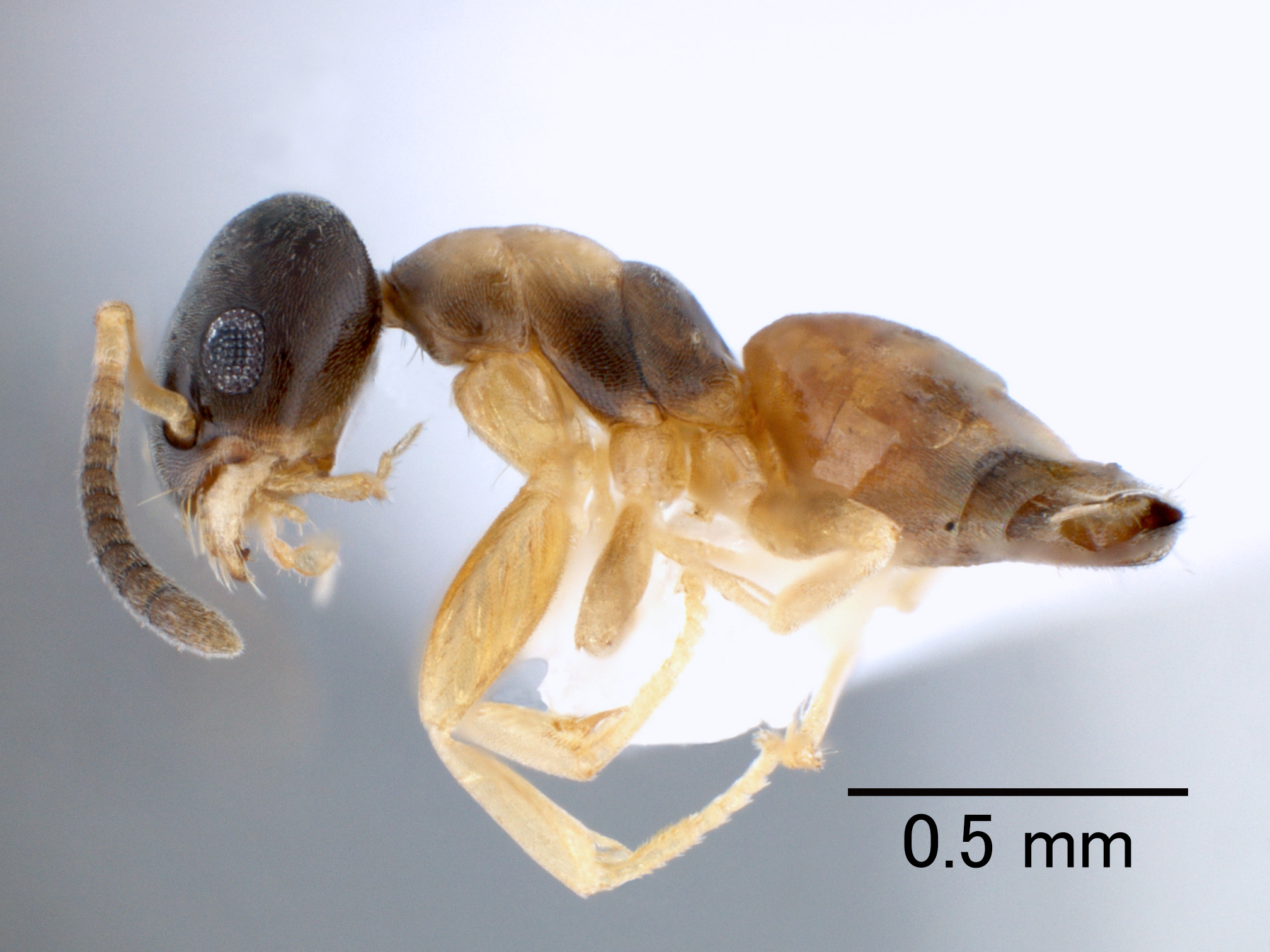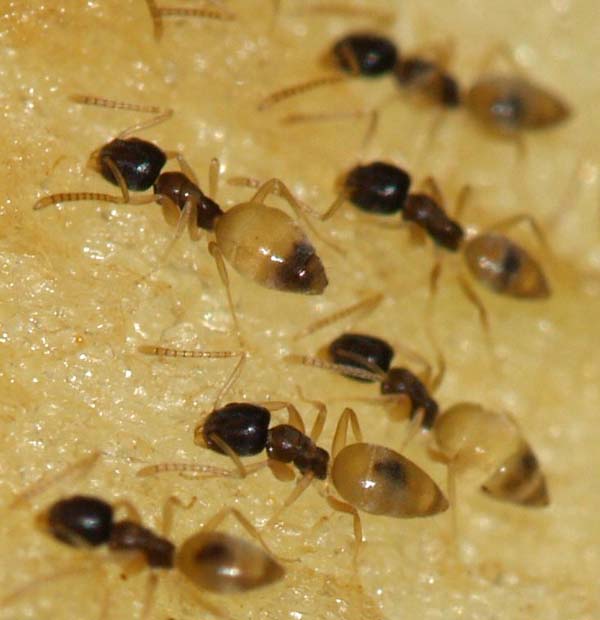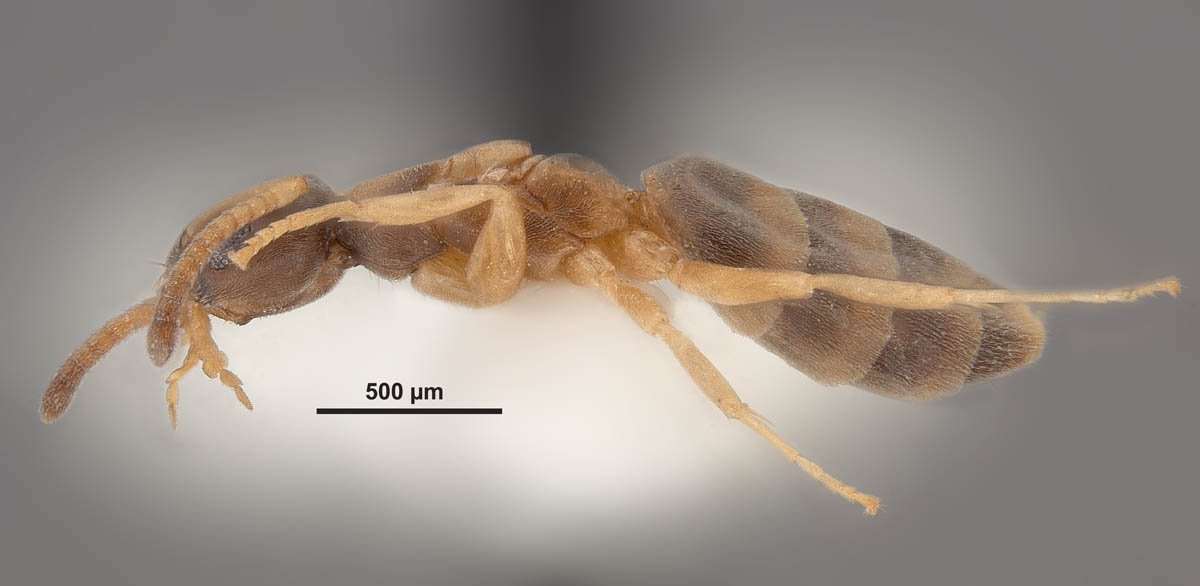
Tapinoma melanocephalum (Fabricius, 1793)
Tapinoma melanocephalum has one of the widest distributions known for any ant species. It has spread across the Old World and New World in both the northern and southern hemispheres. It is tropical and subtropical; at latitudes greater than 30°, it is largely restricted to living inside buildings.

Tapinoma melanocephalum (Fabricius, 1793)
Tapinoma melanocephalum is attracted to sugars and has been observed to tend honeydew producing insects, as well as feeding on dead and live insects insects (Smith 1965). Pest Status Tapinoma melanocephalum's ability to form colonies in any suitable crevice has led to them being a common house infesting ant. It has been reported to form.

Tapinoma melanocephalum (Fabricius, 1793)
The ghost ant, Tapinoma melanocephalum (Fabricius), was considered a nuisance ant that was only occasionally important as a house pest within Florida as late as 1988.
/Tapinoma_melanocephalum_IMG_0713.jpg)
Tapinoma melanocephalum PIAkey factsheet
The ghost ant, Tapinoma melanocephalum (Fabricius), is believed to have its origin in either the Orient or Afro tropical regions. This is a tramp species, introduced through human commerce into the United States and is now established in a number of locations in southern and central Florida.
/Tapinoma_melanocephalum_IMG_0688.jpg)
Tapinoma melanocephalum PIAkey factsheet
The ghost ant, Tapinoma melanocephalum (Fabricius), was considered a nuisance ant that was occasionally important as a house pest within Florida as late as 1988.
/Tapinoma_melanocephalum_EMS1767_CASENT0171078_P.jpg)
Tapinoma melanocephalum PIAkey factsheet
Tapinoma melanocephalum (ghost ant) Author: P Lester Authors Info & Affiliations Publication: CABI Compendium https://doi.org/10.1079/cabicompendium.54310 Datasheet Types: Pest, Natural enemy, Invasive species Abstract

Tapinoma melanocephalum AntWiki
TRAITS. Tapinoma melanocephalum is a small ant, with average length of 1.3-1.9mm (Issg, 2016). It is bicoloured where the head and thorax is blackish brown and the abdomen and legs have a milky white colour which gives the ant its ghost-like appearance and the name melanocephalum (black headed) (Fig. 1) (Nickerson and Bloomcamp, 2003).

Tapinoma melanocephalum (Fabricius, 1793)
To test this, we examined effects of tending by the native mutualistic ant Tapinoma melanocephalum on growth of P. solenopsis colonies on Chinese hibiscus, Hibiscus rosa-sinensis, in a field setting. Ant workers with access to honeydew of mealybugs lived much longer than those provisioned only with water in the laboratory, and number of ant.
/Tapinoma_melanocephalum_EMS1767_CASENT0171078_H.jpg)
Tapinoma melanocephalum PIAkey factsheet
Adult Description: The Ghost Ant ( Tapinoma melanocephalum) is extremely small, 1.3 to 1.5 mm long and monomorphic (one-sized). They have 12-segmented antennae with the segments gradually thickening towards the tip. The head and thorax are deep dark brown with opaque or milky white gaster and legs.

Tapinoma melanocephalum (Fabricius, 1793) アワテコヌカアリ
Tapinoma melanocephalum has one of the widest distributions known for any ant species. It has spread across the Old World and New World in both the northern and southern hemispheres, though at.

Ghost Ant, Tapinoma melanocephalum Urban and Structural Entomology
Tapinoma melanocephalum is listed as one of the most important invasive pest species in China. Information regarding the patterns of invasion and effects of geographic isolation on the population genetics of this species is largely lacking. Location South China. Methods

ARTHROPODA MEXICANA Tapinoma melanocephalum
Tapinoma (from Greek ταπείνωμα low position) is a genus of ants that belongs to the subfamily Dolichoderinae. The genus currently comprises 74 [2] described species distributed worldwide in tropical and temperate regions.

Tapinoma melanocephalum. (a) Body in profile. (b) Head in fullface
Tapinoma melanocephalum is a species of ant that goes by the common name ghost ant. They are recognised by their dark head and pale or translucent legs and gaster (abdomen). This colouring makes this tiny ant seem even smaller. More Info Computer Vision Model Included

Ghost ant Tapinoma melanocephalum Insect
The ghost ant Tapinoma melanocephalum (Fabricius, 1793) is a ubiquitous indoor and outdoor pest throughout much of the tropics and subtropics, and an increasingly common indoor pest in temperate regions (Europe, North America, China, and Japan). In colder climates, the species has been found in places with high humidity and temperature, such as apartments, restaurants, hospitals, and.

Tapinoma melanocephalum (Fabricius, 1793)
Tapinoma melanocephalum Face view close up of the ghost ant Identification & Characteristics Other Names: Tramp Ant Odor: Rotten Coconut (when crushed) Color: Bi-colored, brown head, pale yellowish trunk with variable brown patches. Opaque to milky white legs Size: 0.05 to 0.08 inches Legs: Six Antennae: Yes, with 12 segments
/Tapinoma_melanocephalum_EMS1767_CASENT0171078_D.jpg)
Tapinoma melanocephalum PIAkey factsheet
World wide Queen: Gastral compression dorsoventral; petiolar scale reduced or absent; dorsal face of propodeum shorter than declivitous face; first gastral segment projecting anteriorly and concealing petiole in dorsal view; basal angle of mandible indistinct, with a relatively uninterrupted curve between the masticatory and basal margins.